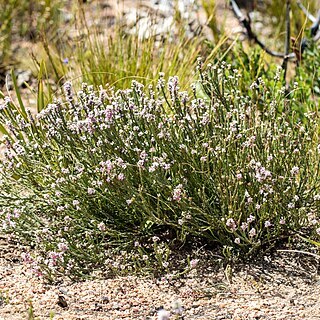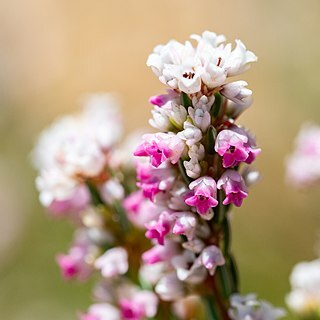Erect shrub, 0.3-0.5(-2.0) m high. Leaves 3-nate, erect, incurved and appressed, 3.1-6.3 mm long, linear or narrowly lanceolate, keeled or sulcate. Flowers 3-nate, ± clustered, often forming a dense long pseudo-spike, calycine. Calyx sepals 1.5-3.2 mm long, obovate, keel-tipped, acute or obtuse, concave, spreading at maturity, margins somewhat glandular. Corolla 3.1-4.2 mm long, urceolate, slightly contracted at throat, sometimes subtetragonous, pink; lobes erect or spreading, subovate, deep flesh-coloured, concolorous or dark-coloured, 1/3-1/2 tube in length. Anthers sublateral, almost basifixed; theca deeply parted, 0.4-0.8 mm long, semi-ovate or elliptic; pore ± 1/2 length of theca; crests subovate in outline, ± deeply incised. Ovary lobed, glabrous; style included; stigma capitate. Flowering time all year.
Erect, resprouting shrub to 1(-2) m. Flowers in tightly packed spikes, small, calycine, urn-shaped, pink often with corolla much paler.


